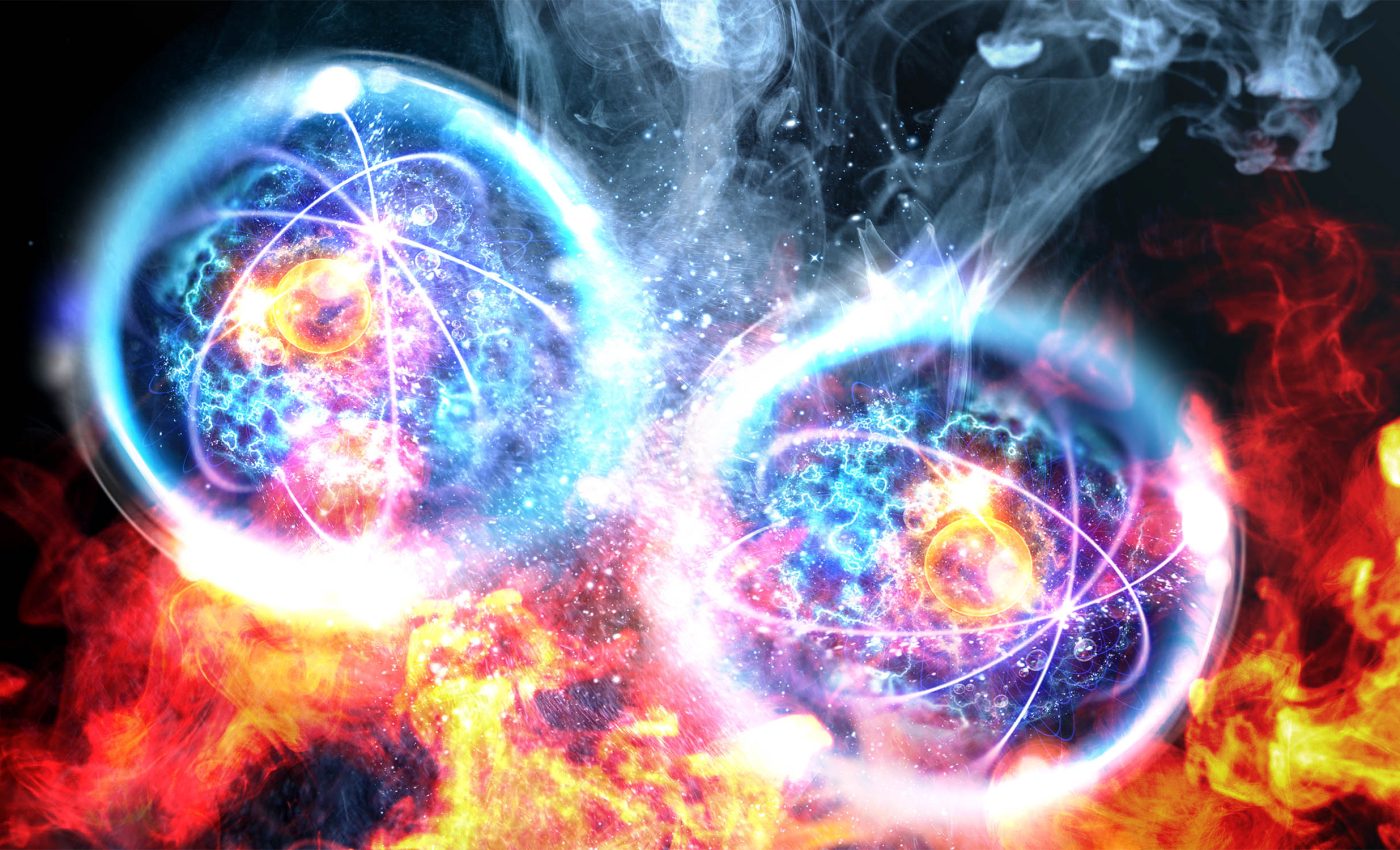
What exactly happens when the nucleus of an atom splits in two? Science just found out
Nuclear fission has powered our world and medical advancements for decades, yet some of its secrets have remained elusive.
One of the biggest puzzles? What exactly happens when an atom’s nucleus splits apart at its “neck rupture” point.
Aurel Bulgac, a physics professor at the University of Washington, has been delving into this very question. He and his team set out to simulate the intricate particle dance during this critical moment of fission.
Supercomputer tackles the quantum realm
To tackle this challenge, Bulgac’s team collaborated with researchers from Los Alamos National Laboratory (LANL).
They harnessed the immense computing power of the Summit supercomputer at the Department of Energy’s Oak Ridge National Laboratory (ORNL).
This was the first fully microscopic, quantum many-body simulation of a nucleus’s neck rupture.
“This is probably the most precise and most carefully obtained theoretical description of neck rupture, without any assumptions and simplification,” Bulgac remarked. “We have a very specific prediction, which until now didn’t exist.”
Rules and dynamics of nuclear fission
For over 80 years, scientists have proposed various models to explain fission dynamics. The classic “liquid drop” theory likened the nucleus to a charged fluid sphere that splits and sends out particles when disturbed.
But Bulgac’s findings suggest a different story.
First off, the team discovered that neck rupture isn’t random. Instead, the spot where the nucleus eventually splits is determined well before the actual scission.
Moreover, they found that the proton neck snaps earlier than the neutron neck, meaning neutrons hold the neck together just before it fully breaks.
Perhaps most intriguingly, they confirmed the existence of scission neutrons. These are neutrons emitted right as the nucleus splits.
“There were people saying they exist, and others saying they don’t exist. We see them, we don’t see them, and so on,” Bulgac noted.
Their simulation not only showed that scission neutrons are real but also detailed where they go and how much energy they carry.
Nuclear fission and scission neutrons
The team’s simulation revealed that scission neutrons are emitted in two distinct ways. Some shoot out sideways, perpendicular to the direction the fission fragments move.
Others emerge from the “noses” of the splitting fragments due to waves of matter sent during the neck’s snap.
“After we put everything together and ran the simulation, we found out certain things that were totally unexpected: neutrons coming out sideways and then in the direction of the moving fragments,” Bulgac said.
“These types of distinct spectra are something that none of the earlier models predicted. Moreover, they are very high energy, so they should have properties very distinct from thermal neutrons.”
A very “super” computer simulation
Running such a detailed simulation wasn’t easy. The team used the entire Summit supercomputer for almost 1 million node-hours.
Each run took about 15 hours and covered nuclei like uranium-238, plutonium‑240, and californium-252 under various conditions.
“An absolutely crucial tool was the use of supercomputers at Oak Ridge, starting with Jaguar and Titan, then Summit,” Bulgac explained. “Without them, all this would have been impossible. Absolutely impossible.”
The mathematical framework behind the simulation is something Bulgac has been refining since the early 2000s.
Instead of tracking every single particle, his approach focuses on the overall distribution of particles in space, making the complex problem more manageable.
What’s next for nuclear fission?
The next big step is testing these predictions in the real world. Bulgac has already begun conversations with experimentalists eager to verify the findings.
“We used precise values for the parameters that describe this phenomenon — and nothing else. And these are the results we got,” he stated. “Now, if they are not true, then there is a very big question: what’s wrong with the theory?”
It’s a pivotal moment. If experiments confirm the simulation, it could reshape our understanding of nuclear fission. If not, it opens up new avenues of inquiry.
“At the moment, it’s very hard to see what would be wrong, but we have to wait and see,” Bulgac said. “If you make a prediction, it is confirmed or not confirmed, and then you must look and see. This is how physics proceeds.”
Why does any of this matter?
Understanding the nuances of nuclear fission isn’t just an academic exercise. It has practical implications for nuclear energy production, medical applications, and even our grasp of fundamental physics.
By shedding light on the scission process and the behavior of scission neutrons, Bulgac’s work could lead to more efficient nuclear reactors or new technologies harnessing fission.
The publication of the team’s paper in the journal Physical Review Letters has already sparked interest. Scientists around the world are eager to see where this research leads.
For those of us outside the lab, it’s a reminder of how much there still is to learn about the forces that shape our universe.
New chapter in nuclear physics
As experiments get underway to test these findings, the scientific community watches with bated breath.
Whether confirming or challenging Bulgac’s simulation, the results will undoubtedly deepen our understanding of nuclear fission.
And perhaps, in the not-so-distant future, we’ll look back on this research as a turning point — a moment when we peeled back another layer of the atomic world and discovered something truly remarkable.
Who would have thought that after all these years, the simple act of an atom splitting could hold so many surprises?
The full study was published in the journal Physical Review Letters.
—–
Like what you read? Subscribe to our newsletter for engaging articles, exclusive content, and the latest updates.
Check us out on EarthSnap, a free app brought to you by Eric Ralls and Earth.com.
—–













